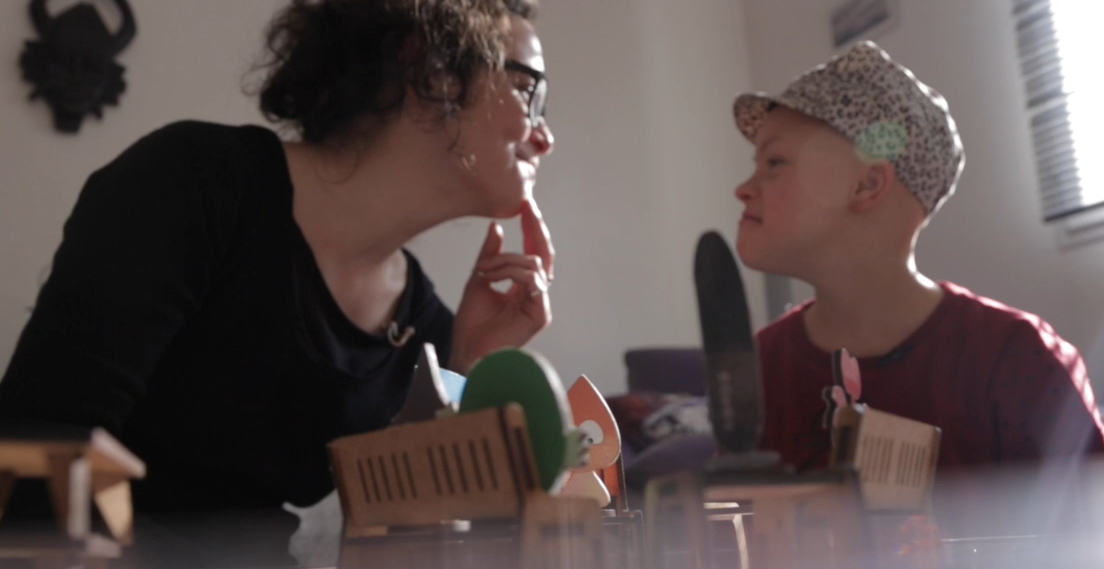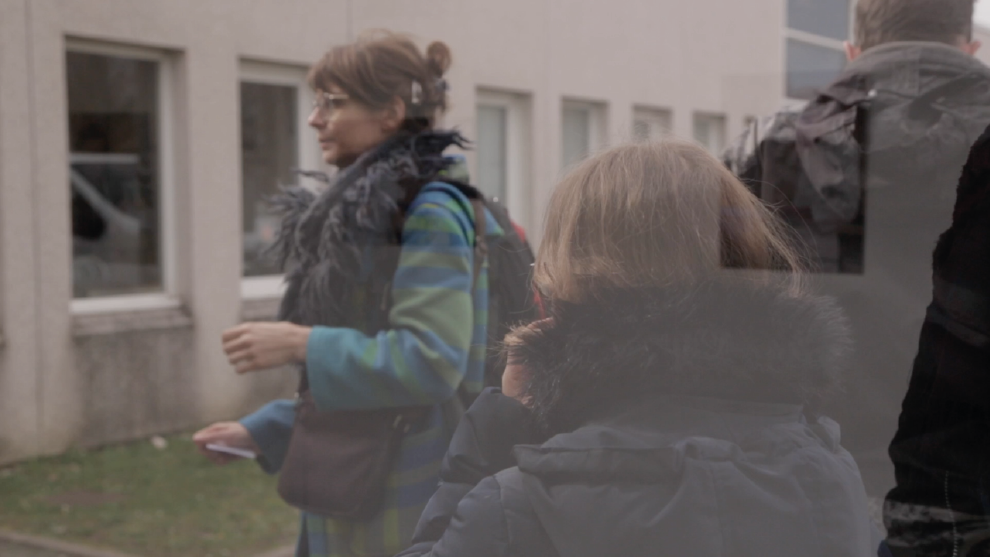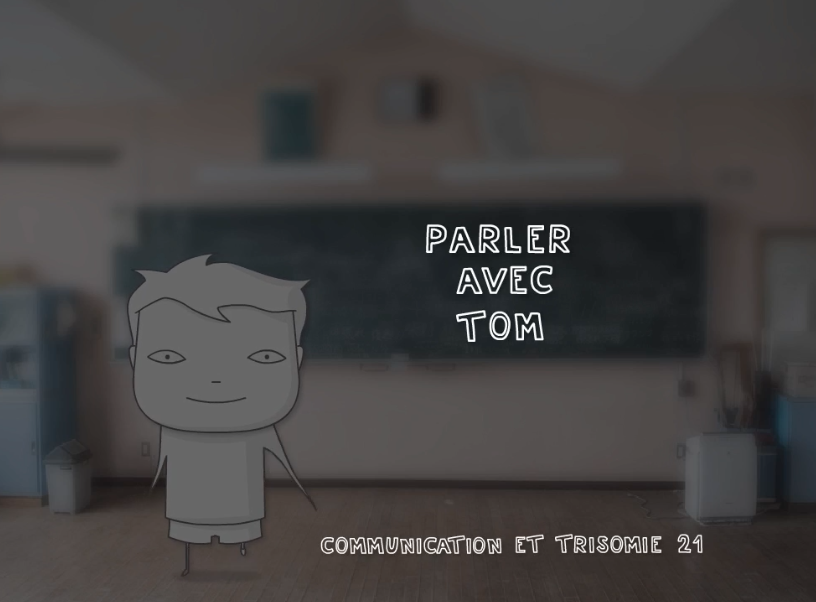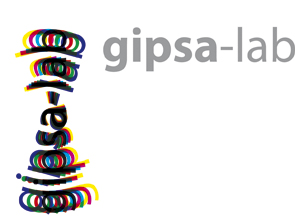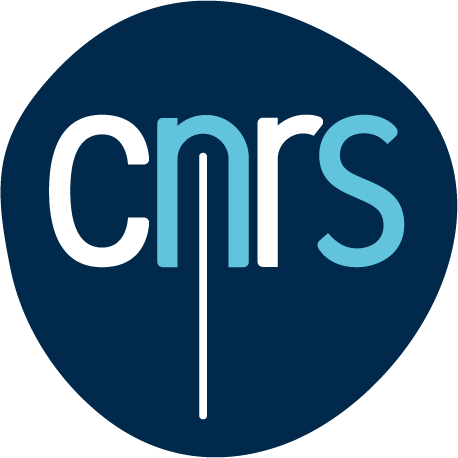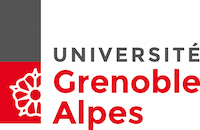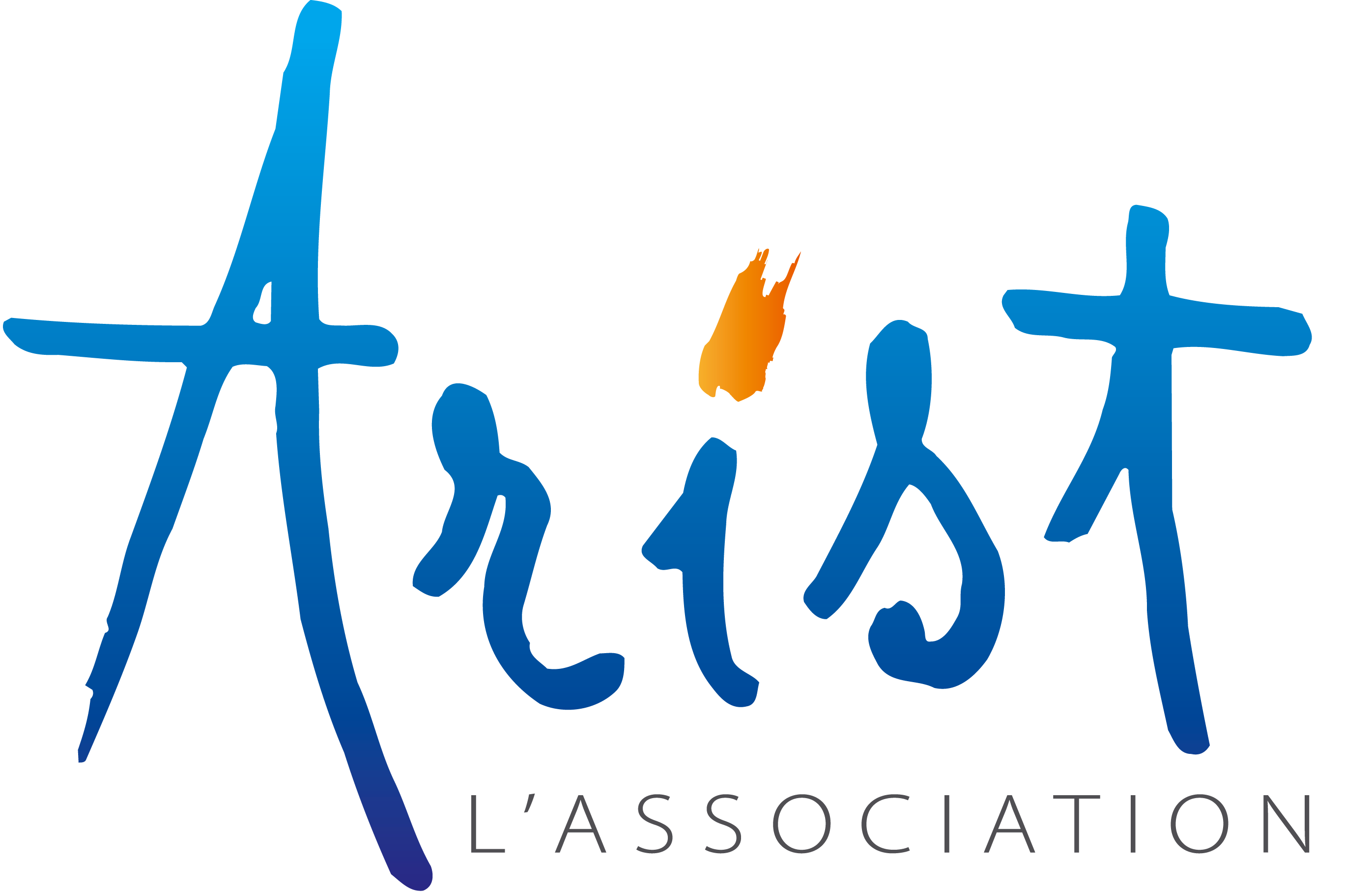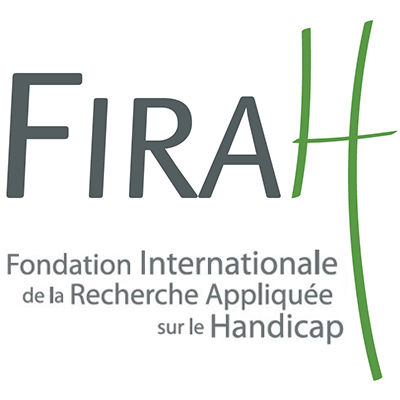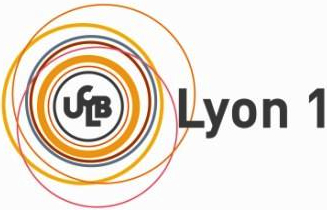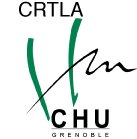ComEns
The ComEns research project, for Communiquons Ensemble (Communicating Together), aims at applying advances in research on speech, manual gestures and interaction to help communication in people with speech difficulties.
Coordinators of the project
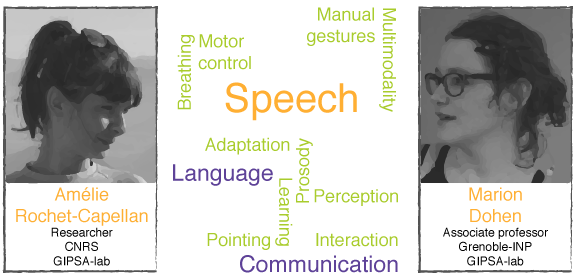
Amélie and Marion work in the same research laboratory (GIPSA-Lab in Grenoble, France) and share a common interest for spoken and gestural communication. Their research aims at widening our understanding of human communication and its relationship with language. They are also eager to apply knowledge to help people with speech difficulties.
The ComEns web site
This web site aims at communicating and exchanging around four main lines of the ComEns project: Speaking, Gesturing, Interacting and Exchanging. These four main axes are pictured in the icons below and the pictures in the right-hand menu. When clicking on these pictures, you will see the site's posts related to the axes.
| Axis 1: Communicating is speaking. Speaking, is moving and coordinating many organs. It is also using multiple and complex sensory feedback (audition, vision, touch). This is what we call speech multimodality. The first axis of the ComEns research project deals with multimodal speech in people with speech difficulties. | |
| Axis 2: Communicating is gesturing. Communicating is moving our body. We move our articulators (tongue, lips, jaw...) in speech but also our hands. Research shows that motor control of manual communicative gestures and speech are not independent. The second axis of the project aims at evaluating how the involvement of manual gestures in communication can help complex speech control. | |
| Axis 3: Communicating is interacting. When we communicate, it's mostly with another person. Speech research shows that the way we speak depends on the person we speak with. Two people speaking also tend to coordinate, use the same vocabulary, move together. The third axis of ComEns aims at understanding how the interlocutor influences the communication of the person with speech difficulties. Our hypothesis is that the communicative difficulty does not lie within the person suffering from it but within the interaction with other people. | Axis 4: Communicating is exchanging. ComEns is an applied research project which aims at developing exchanges between fundamental research, people concerned, their families, professionals and people at large. It is for this purpose that we setup this web site. We wish to connect research with daily life, for knowledge and recent applications to benefit to those who need it most. |
Partners and collaborations
Associations / foundations
The project was setup in collaboration with the Association de Recherche et d'Insertion Sociale des Trisomiques (ARIST - Association for Research and Social Integration of People with Down Syndrome) and got a first funding by the International Foundation of Applied Disability Research (FIRAH).
Professionals
The first studies of the project are conducted in collaboration with different professionals, among which: Estelle Gillet-Perret, speech therapist at the Reference Center for Language Impairments and Learning Disabilities, the speech therapists of the Huguette Permingeat CAMSP of the ARIST association (Eybens, France), the Health Network ANAÏS and Marielle Lachenal, MAKATON trainer.
Research and Teaching
The research and supervision of the students is conducted in collaboration with: Agnès Bo and Agnès Witko (ISTR, Lyon 1 University), Jean-Marc Colletta (LIDILEM Laboratory, Stendhal University, Grenoble, France), Mark Latash (PennState University, USA), Lucie Ménard (UQAM, Montreal, Quebec).
